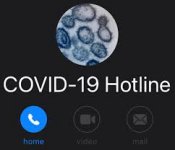Lately I’ve observed the struggle and drama people face in joining a videoconference. I’m not talking about people who participate in the same videoconference every day with a regular group of participants. I’m talking about people — even tech-savy types — who go through agony in attempting to join a new videoconferencing platform for the first time.
Why should this be so? Well, there are many elements that need to come together on the fly in real time before anything can happen.
- Do I have the appropriate mobile app, downloaded .exe file, or WebRTC browser?
- Does my device or computer have a microphone/speaker/camera?
- Is the correct microphone/speaker/camera selected, usable, and unblocked?
- Do I have a good enough Internet connection?
- Can I connect to the conferencing platform?
- Can I see/be seen and hear/be heard?
I’ve seen telehealth visits that wasted so much time in starting up that it would have been better for the patient to drive to the doctor’s office. I’ve seen embarrassing situations where a participant can’t hear the others but everything they’re saying, unbeknownst to them as they struggle to get connected, is being heard by everyone else.
At Radish Systems we take a different approach. Of the billions and billions of calls made every day, many involve just two people. Think of the calls you make to businesses or organizations to get information or support, resolve a billing issue, ask a question, or get medical assistance.
You should be able to pickup the phone, dial a normal number, and reach the other party anywhere in the world. We can all do that. Then Radish joins a secure, temporary data session to the phone call to make it better than just a voice-only call — without going all the way to a video call. There are huge advantages in this approach, which we call ChoiceView®.
- ChoiceView starts with the familiarity of a phone call. It is, in fact, a phone call, not a pre-arranged conference.
- It doesn’t need a mobile app, so it works with first-time callers.
- It works with smartphones as well as any phone and separate computer or tablet.
- It preserves voice quality without needing a broadband connection.
- It’s inherently compatible with phones and business phone systems.
- It works with automated systems (COVID hotlines, bots, and Interactive Voice Response systems) as well as live agents, including doctors, help desk personnel, and contact centers.
- Since a phone call is established before the data session is joined, it’s an inherently secure way to vet the caller.
Checkout what we’re doing at Radish and see how ChoiceView is dramatically and easily enhancing customer engagement. “Now I see what you’re talking about!”™.





